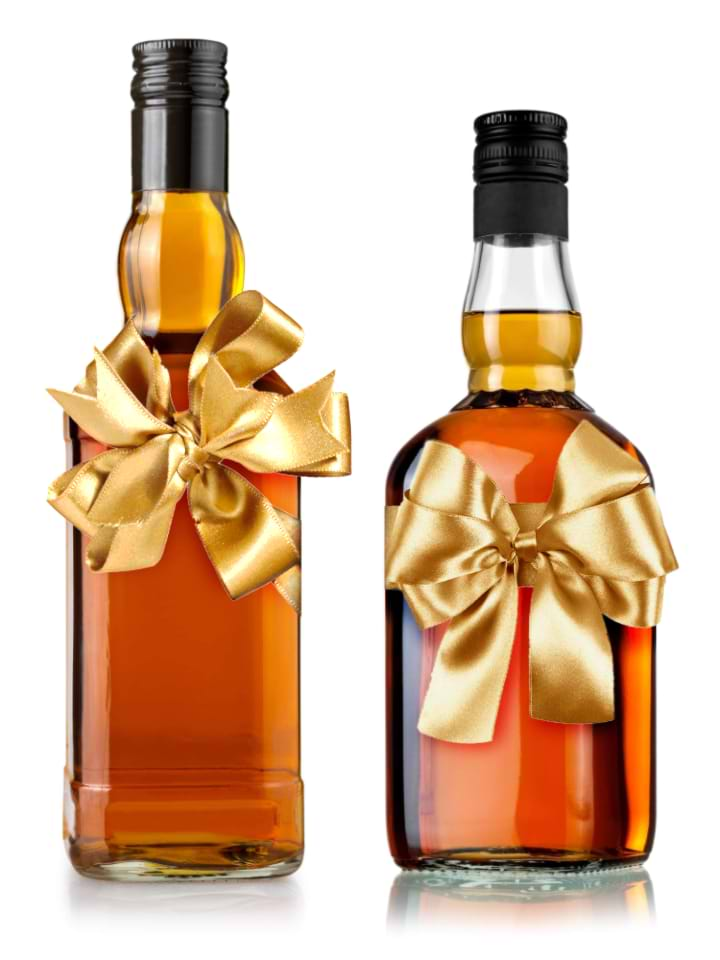
At Rackhouse Whiskey Club, we’re not afraid to say that we’re pretty snobby when it comes to whiskey. Small batch, hard-to-find craft whiskey is our jam, which is why the latest controversy surrounding Fireball Cinnamon Whisky has us shaking our heads.
Here’s the scoop if you haven’t been paying attention. The cinnamon-flavored liqueur from Canada, which bills itself as “Cinnamon Whisky,” has become one of the top-selling liqueurs in the United States over the past decade (even though you can make your own cinnamon whiskey at home fairly easily). But the parent company, Sazarec, has come under fire (sorry not sorry!) for allegedly not containing any actual whiskey in their bottles of Fireball. Consumers are suing the company for fraud and misrepresentation as under closer inspection, the mini bottles of the alcoholic beverage don’t actually contain any whiskey.
So, what exactly do they contain?
The smaller bottles apparently are made from a blend of malt beverage and wine, while the labeling still says Fireball Cinnamon Whisky. Upon closer inspection, customers realized the description of the product was "malt beverage with natural whisky & other flavors and caramel color," insinuating whiskey is an ingredient used in the drink, when it actually uses whiskey flavor, according to the class action lawsuit, which was filed earlier this month in the U.S. District Court for the Northern District of Illinois (cq).
"What the label means to say is that the product contains 'natural whisky flavors & other flavors,' but by not including the word 'flavors' after 'natural whisky,' purchasers who look closely will expect the distilled spirit of whisky was added as a separate ingredient," the complaint says.
Digging a little further into the controversy reveals there are actually two different products marketed as Fireball. The flagship product, Fireball Cinnamon Whisky is a 33 percent ABV (66-proof) liqueur made with a mixture of Canadian whiskey, sweeteners and natural cinnamon flavoring. Any spirit where you lower its ABV and add sugar to is not technically a spirit, it becomes a liqueur.
The problem arose in January 2023 when a Chicago woman named Anna Marquez filed a lawsuit alleging that she purchased a bottle of Fireball Cinnamon expecting to receive a whiskey-based libation and instead she discovered what she purchased was ultimately a malt liqueur-based beverage that contained no whiskey at all.
The reason Fireball created Fireball Cinnamon was so they could sell the smaller bottles in more places. Alcohol laws vary greatly by state and sales of wine and beer are allowed in more places than hard liquors like whiskey. By marketing the mini bottles as Fireball Cinnamon, a malt beverage, they can be sold in about 170,000 more locations in the U.S. even if it’s illegal to sell whiskey in that particular location. You’re not seeing Fireball Cinnamon Whisky in those locations, you’re seeing Fireball Cinnamon.
What the lawsuit boils down to are two issues: one, the two bottles are nearly identical which means the average consumer wouldn’t know they weren’t purchasing Fireball Cinnamon Whisky. And two, the lawsuit alleges the packaging contains misleading language on the label, which describes the product as a “malt beverage with natural whisky and other flavors and caramel color.” The lawsuit claims the label could be made more clear that it does not contain any real whiskey.
It remains to be seen how Fireball will fare this storm but in our opinion it doesn’t matter either way! Get rid of the imitation controversy and go for the real thing. If you want whiskey that is hard-to-find and made from true craft whiskey distilleries, check out RackHouse Whiskey Club. RackHouse scours the U.S. looking for the best craft distilleries with the most interesting stories to curate a unique subscription box filled with full-sized bottles of small batch whiskey. We’re building a community of premium craft whiskey drinkers (who would snub their nose at Fireball or make their own cinnamon whiskey!). And you’re invited! Join us!








